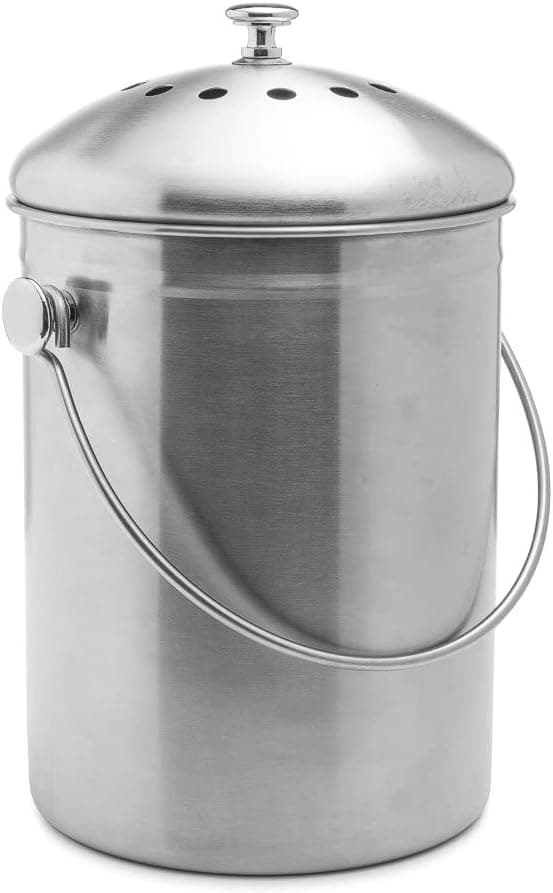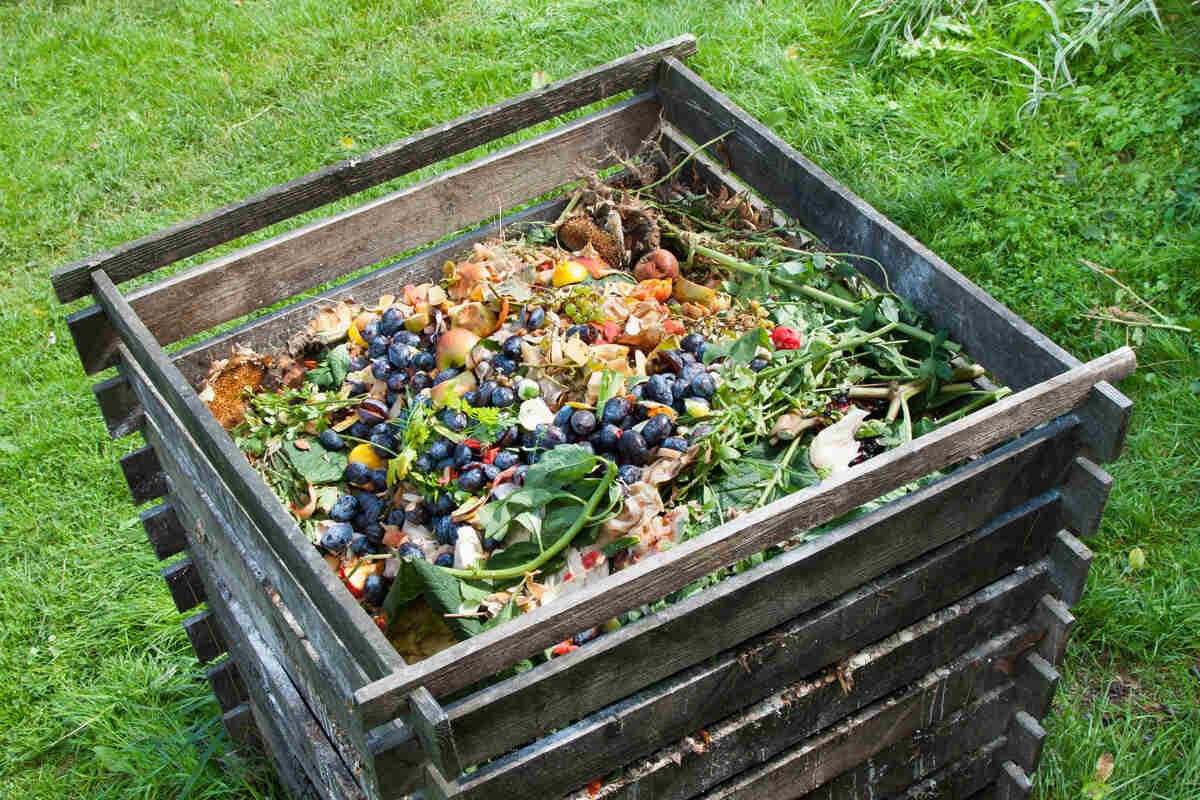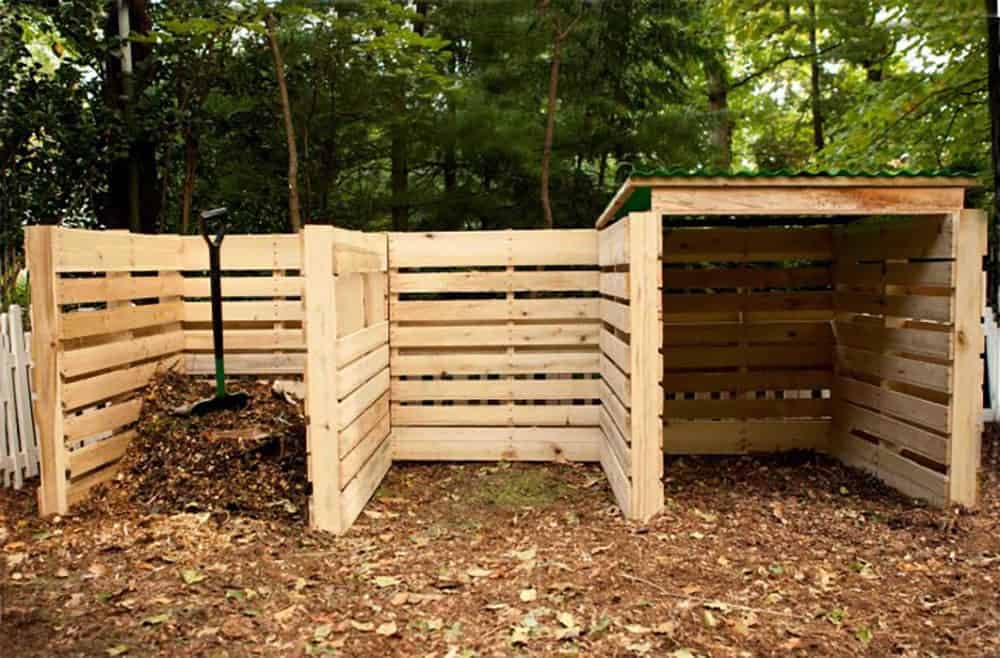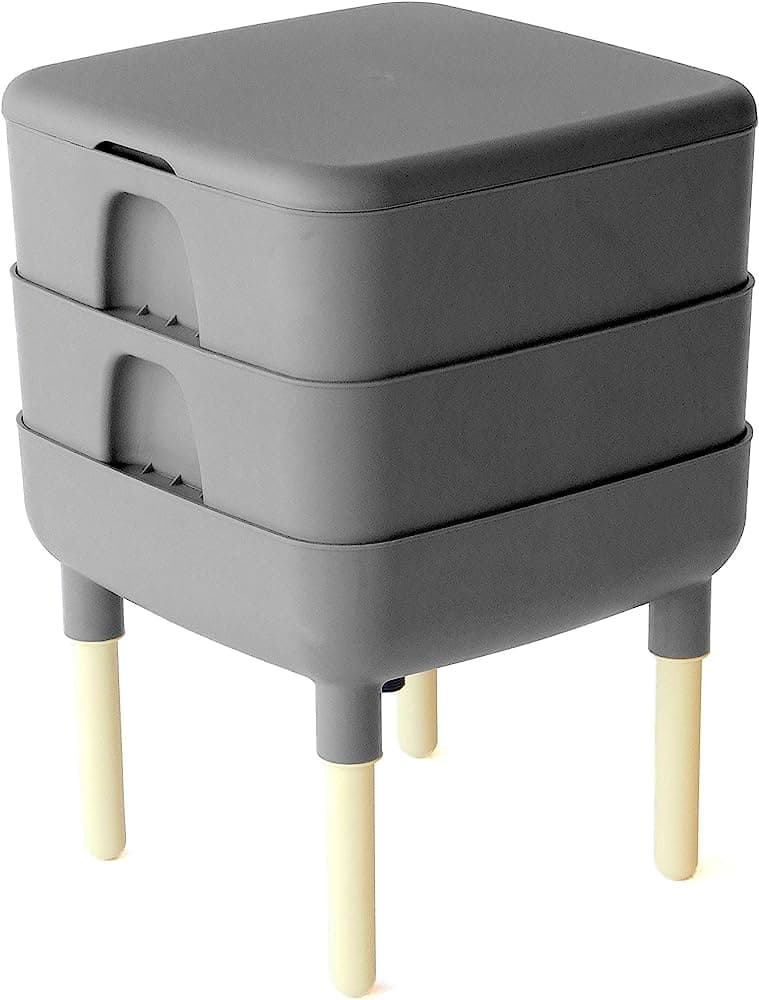How to Compost at Home: The Best Indoor Bins and Outdoor Systems
Composting at home is more than just an eco-friendly trend; it's a powerful action that transforms waste into a valuable resource. By composting, you can reduce your trash, address climate change, and contribute to healthier soil in your garden. Whether you live in a house with a spacious backyard or an apartment with limited space, there's a composting method that can work for you. In this guide, we'll explore various indoor bins and outdoor composting systems used for composting, helping you find the best fit for your lifestyle and needs. Let's dive into the world of composting and discover how your waste can bring life to your garden.
Indoor Composting
Composting isn't just an outdoor activity. With the right tools and knowledge, you can turn your kitchen scraps into nutrient-rich compost right in your own home. Indoor composting is a great option for those who live in apartments or homes without a yard. It's also a year-round activity, unaffected by seasonal changes.
The Stainless Steel Bin with a Charcoal Filter
One of the most popular options for indoor composting is a stainless steel bin with a charcoal filter. This type of bin is compact, stylish, and efficient. The stainless steel construction ensures durability and prevents any unwanted odors from escaping. The charcoal filter aids in this process, absorbing odors that do occur.
However, like any composting method, it has its pros and cons. On the positive side, it's easy to use, fits well in most kitchen decors, and effectively controls odors. On the downside, it requires regular cleaning and the replacement of the charcoal filter over time.

How to Choose a Pail and Reduce Odors
When choosing a compost pail for indoor use, consider the size, material, and odor control. A good compost pail should be large enough to hold a few days' worth of kitchen scraps, but small enough to fit in your kitchen comfortably. Materials like stainless steel or ceramic are preferred for their durability and ease of cleaning.
To reduce odors, look for a pail with a tight-fitting lid and a charcoal filter. Regularly emptying and cleaning your pail can also help keep odors at bay.
Other Options for Indoor Composting Bins
Apart from stainless steel bins, there are other options for indoor composting. Vermicomposting, or worm composting, is a popular choice. It involves using a bin, bedding material, worms, and food scraps to create compost. This method is efficient, odorless, and can be done indoors or outdoors.
Tips for Successful Indoor Composting
Successful indoor composting requires a balance of the right materials and proper maintenance. Here are some tips:
- Balance Your Greens and Browns: Your compost needs a good balance of green materials (like vegetable peels, coffee grounds, and fresh grass clippings) and brown materials (like dry leaves, paper, or cardboard).
- Turn Your Compost Regularly: This helps to aerate the pile and speeds up the composting process.
- Keep Your Compost Moist, Not Wet: The compost should have the consistency of a wrung-out sponge. If it's too dry, add some water. If it's too wet, add more brown materials.
- Cut Up Your Scraps: Smaller pieces decompose faster. Try to cut up your kitchen scraps into small pieces before adding them to your compost bin.
- Avoid Composting Certain Materials: Meat, dairy, and diseased plants should not be composted at home as they can attract pests and create unpleasant odors.
By following these tips, you can create a successful indoor composting system and contribute to a more sustainable lifestyle.
Outdoor Composting
Outdoor composting is a natural process that transforms your kitchen and garden waste into nutrient-rich compost. This method is a great way to recycle your organic waste and improve the health of your garden soil.
A Low-Maintenance Compost Pile
A low-maintenance compost pile is a simple and cost-effective way to compost at home. You can start by collecting your kitchen scraps and yard waste, such as leaves and grass clippings. These materials are then piled up in a designated area in your backyard. The compost pile should be turned occasionally to help speed up the decomposition process and maintain the right moisture level.
To know when to turn your compost pile, observe the decomposition process. If the pile seems to be stagnant or if it starts to emit a foul odor, it's time to turn it. Turning the pile helps to aerate it and introduces oxygen that aids in the decomposition process.
As for what to add to your compost pile, aim for a good balance of green (nitrogen-rich) and brown (carbon-rich) materials. Green materials include vegetable scraps, coffee grounds, and fresh grass clippings. Brown materials include dry leaves, straw, paper, and wood chips. Scientists have found that it's best to maintain a carbon/nitrogen ratio between 25-30 parts carbon to 1 part nitrogen for optimal composting.
Avoid composting meat, dairy, diseased plants, and pet wastes as these can attract pests and create unpleasant odors. Also, be mindful of the size of the materials you add. Smaller pieces decompose faster, so it's beneficial to cut or break down larger materials before adding them to the pile.
Remember, composting is a natural process that can vary depending on the materials, climate, and other factors. Don't be discouraged if your own compost pile doesn't behave exactly as expected. With patience and practice, you'll learn to manage your compost pile effectively.
Later in this guide, we'll discuss how to build a compost pile in a day. This method is a bit more labor-intensive upfront, but it can yield a large amount of compost relatively quickly. Stay tuned for that!

Holding Bins
Holding bins are enclosed containers where you can store your compost materials. They are ideal for small spaces and can help keep your compost pile neat and tidy. The bins can be made from various materials, such as wire, wood, or plastic.
For example, wire bins are a popular choice due to their affordability and ease of assembly. They allow for good air circulation, which is crucial for the composting process. However, they may not be the best choice if you live in an area with wildlife, as animals can easily access the compost.
Wooden bins, on the other hand, offer a more sturdy and visually appealing option. They can be built from untreated wood to avoid any chemicals leaching into your compost. Some people choose to build their own wooden bins, while others opt for commercially available ones.
Plastic bins are another common choice for composting. They are typically enclosed with a lid, which can help keep pests out and control odors. Many plastic bins also have a door at the base, making it easy to remove the finished compost.
In addition to these, there are also more specialized options. For instance, tumbling compost bins are designed to be easily rotated, which helps mix the compost and speed up the decomposition process. These are often made from durable plastic and are ideal for those who prefer a more hands-off approach to composting.
The Round Wire Compost Bin
The round wire compost bin is a type of holding bin made from wire mesh. It's easy to assemble and allows for good air circulation, which is crucial for the composting process.
Multi-tiered Composters
Multi-tiered composters are compost bins designed with several layers or tiers. This design allows you to separate the fresh materials from the decomposing ones. As the composting process progresses, you can simply move the finished compost down to the next tier.

The Three-Bin Turning Unit
The three-bin turning unit is a composting system that consists of three separate bins. This design allows you to turn and aerate your compost piles more efficiently. You can start a new compost pile in one bin while the other bins are in different stages of decomposition.
The Wood-and-Wire Three-Bin Turning Unit
The wood-and-wire three-bin turning unit is a variation of the three-bin system. It combines the durability of wood and the ventilation of wire mesh to create an efficient composting system for green waste.
I found some instructions how you can build one your self, if your have the space of course.
Tips for Successful Outdoor Composting
To ensure a successful composting process and healthy soil, it's important to maintain the right balance of green (nitrogen-rich) and brown (carbon-rich) materials in your compost pile. Turning your compost pile regularly can help speed up the decomposition process and prevent odors. It's also crucial to keep your compost pile moist, but not too wet.
Worm Composting
Worm composting, also known as vermicomposting, is a method that uses worms to process organic matter and waste into nutrient-rich compost. This method is particularly suitable for indoor composting, but can also be used outdoors. It's an excellent way to recycle kitchen scraps, and the resulting compost (also known as worm castings) is a fantastic soil conditioner.
The Worm Compost Bin
A worm compost bin, or vermicomposter, can be relatively inexpensive and easy to maintain. There are several ways to vermicompost, but one common method involves using a plastic bin with a removable lid. The bin should be somewhat flexible so you can drill holes into it for ventilation and drainage. The holes should be covered with a fine vinyl screen to prevent the worms from escaping. The bin should be placed in an indoor space to protect the worms from extreme temperatures.
The bin is filled with a mixture of shredded cardboard and paper, a bit of soil, and just enough water to dampen everything. The worms are then added to this mixture. Red wrigglers are often recommended for worm composting because they consume waste quickly, but earthworms can also be used. Be careful to avoid invasive species of worms, such as the Asian Jumping Worm.
Once the bin is set up, the worms are fed with food scraps, organic materials such as vegetables and fruit scraps, bread, tea bags, coffee grounds, and cereal. It's important to avoid feeding the worms any animal by-products (fat, bone, dairy, meat, waste) or any materials that they can't process, like plastic or fabric tea bags, coffee filters, or the labels placed on produce by grocery stores.
The food scraps are added to the bin once a week. Each time you add food scraps to the worm bin, you should also add a small handful of shredded paper and cover all the food scraps with dirt and moist paper. This helps to prevent fruit flies from being attracted to the bin.
Over time, the worms will process the food scraps and paper, producing a rich, dark compost that can be used to enrich your garden soil. The bin will also produce a liquid known as "worm tea," which can be drained off and used as a liquid fertilizer.

Tips for Successful Worm Composting
Here are some tips to help you succeed with worm composting:
- Maintain the right conditions: Worms need a moist and well-ventilated environment to thrive. The bedding should be as wet as a wrung-out sponge and the bin should have plenty of holes for air exchange.
- Feed the worms a balanced diet: A variety of fruit and vegetable scraps, coffee grounds, tea bags, and crushed eggshells can provide a balanced diet for your worms. Avoid feeding them meat, dairy, oily foods, or anything that might attract pests.
- Manage the bin properly: Over time, the compost will build up in the bin. When the compost reaches the bottom of the top holes you drilled, it's time to harvest the compost. You can do this by feeding the worms on one side of the bin for a couple of weeks to draw them to that side, then removing the compost from the other side.
- Monitor the worm population: If your bin is working well, the worm population will increase. If the bin becomes too crowded, you may need to remove some worms. You can give them to a friend, start another bin, or release them into your garden.
Worm composting is a fun and rewarding way to reduce your food waste and create rich compost for your garden. With a little care and attention, you can maintain a thriving worm composting system in your own home.
For more detailed instructions on setting up and maintaining a worm composting bin, you can refer to the <u>.
Building a Compost Heap in a Day
Building a compost heap in a day might seem like a daunting task, but with the right guidance and a little elbow grease, it's entirely achievable. Here's a step-by-step guide to help you get started.
- Choose the Right Spot: The first step is to choose the right location for your compost heap. It should be on level ground and preferably on bare soil, not paving. If you're worried about rats, consider adding a base of chicken wire.
- Gather Your Materials: For this project, you'll need a spade or rake, four strong wooden pallets, six sturdy wooden stakes, a sledgehammer, a bow saw, and strong wire.
- Prepare the Ground: Clear the area where you're going to put the compost bin and, if necessary, level the ground using a spade or a rake.
- Set Up the Back Edge: Stand a pallet on its long edge to form the back edge of the compost bin. Push a stake through the two layers of the pallet at either end, using a sledgehammer to drive them firmly into the ground – about 20-30cm deep.
- Form the Sides: Position the remaining two pallets at right angles to the first to make the sides. Butt the corners tightly together to stop compost from spilling through the gaps. Fix in place with stakes in each corner.
- Stabilize the Structure: To keep the structure stable, wire the pallets together at each corner. Trim the tops of the stakes with a bow saw.
- Create a Gate: Wire the last pallet onto the front of the right side pallet to make a gate – you’ll need to open it when you want to get to the compost.
- Start Filling Your Bin: Now you're ready to start filling your bin with garden and kitchen waste.
Remember to cover your bin with a carpet or similar material to keep it warm – this will help to speed up the composting process. Also, ensure that it is moist – you may need to water it lightly in warm weather.
Tips and Tricks for Maintaining the Compost Heap
Maintaining your compost heap is just as important as building it. Here are a few tips to ensure your compost heap remains healthy and productive:
- Balance Your Compost: Aim for a good balance of green (nitrogen-rich) and brown (carbon-rich) materials. Green materials include vegetable scraps, coffee grounds, and fresh grass clippings. Brown materials include dry leaves, straw, paper, and wood chips.
- Turn Your Compost Regularly: Turning your compost helps to aerate it, speeding up the composting process. Try to turn your compost pile every few weeks using a pitchfork or garden fork.
- Keep Your Compost Moist: Your compost pile should be as moist as a wrung-out sponge. If it's too dry, add water. If it's too wet, add more brown materials.
- Avoid Composting Certain Materials: Avoid composting meat, dairy, diseased plants, and pet wastes as these can attract pests and create unpleasant odors.
Conclusion
Composting at home is a rewarding practice that benefits both your garden and the environment. Whether you choose to compost indoors with a stainless steel bin, outdoors with a homemade compost heap, or even try worm composting, you're contributing to a more sustainable lifestyle. Remember, a home composting system is not a one-size-fits-all practice. Feel free to experiment and find the method that works best for you and your home.
We encourage you to give composting a try and share your experiences. The more people compost, the less waste ends up in our landfills, and the healthier our gardens become. So why not spread the word and get your friends and family composting too?
References and Further Reading
For more information on composting and different composting methods, check out the following resources:
Remember, the best way to learn is by doing. So, get out there and start composting!